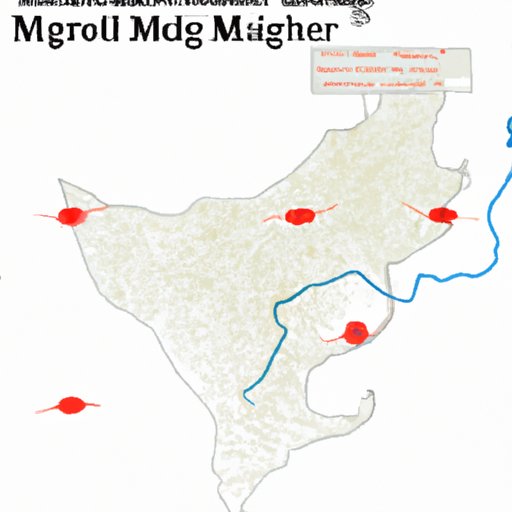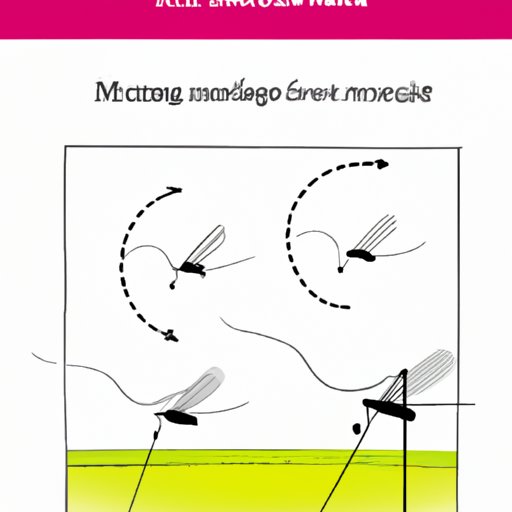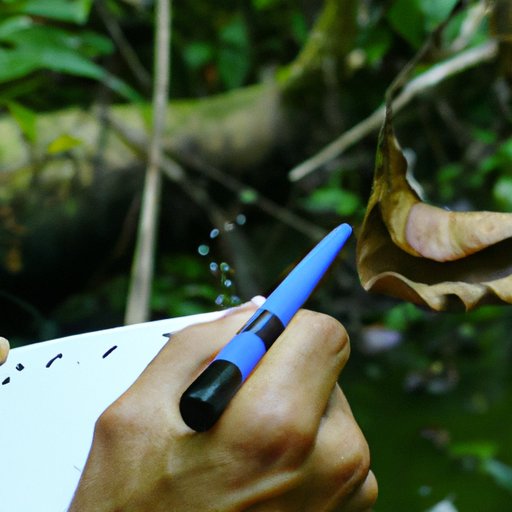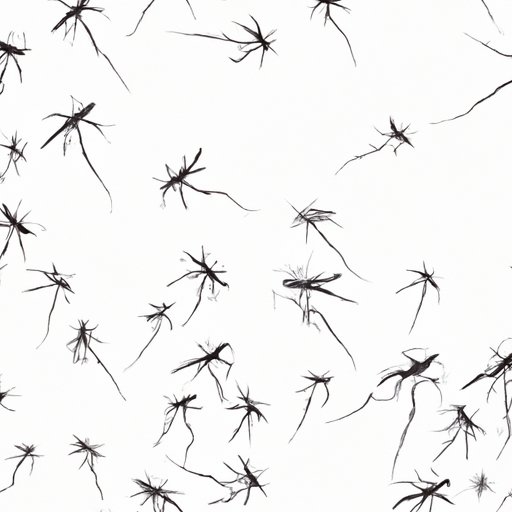Introduction
Mosquitoes are small flying insects that are known for their ability to spread diseases such as malaria, dengue fever, and Zika virus. As such, understanding their travel range is important for controlling mosquito populations and minimizing the spread of disease. This article will explore how far mosquitoes can travel, looking at the maximum flight range, the impact of distance on mosquito populations, and the long-distance migration habits of different species.
Examining the Maximum Flight Range of Mosquitoes
The maximum flight range of a mosquito is determined by several factors, including its age, size, and species. Generally speaking, larger mosquitoes with longer wingspans have the potential to travel farther than smaller ones. The age of the mosquito also plays a role, with older mosquitoes being more capable of covering greater distances than younger ones. Additionally, some species of mosquitoes are more adapted to long-distance flights than others.
In terms of what a single mosquito can cover in a single flight, this can vary greatly depending on the factors mentioned above. For example, a large, adult mosquito of a species adapted to long-distance flights could potentially cover up to 10 miles in a single flight. On the other hand, a smaller, younger mosquito of a species not adapted to long-distance flights may only be able to cover a few hundred feet in a single flight.

The Impact of Distance on Mosquito Populations
The distance between two locations can have a significant impact on the population of mosquitoes in an area. Generally speaking, the further apart two locations are, the less likely it is for mosquitoes to travel between them. This means that populations of mosquitoes can become isolated from one another over long distances, leading to different populations evolving differently in different areas.
For example, a population of mosquitoes living in an area with no nearby water sources may evolve to be better adapted to surviving without access to water. Similarly, a population living in an area with a high concentration of predators may evolve to be better at avoiding or evading predators. These differences can lead to different populations of mosquitoes in different areas.
Exploring the Long-Distance Migration Habits of Mosquitoes
Different species of mosquitoes have different migration patterns. Some species migrate over short distances, while others are capable of migrating over much longer distances. For example, the Asian tiger mosquito (Aedes albopictus), which is capable of carrying diseases such as dengue fever and Zika virus, has been known to migrate up to 500 miles in a single flight.
The role of wind in influencing the movement of mosquitoes should also be considered. Wind can be a major factor in determining the direction and distance a mosquito can travel. In some cases, strong winds can cause a mosquito to travel much farther than it would otherwise, potentially covering hundreds of miles in a single flight.
How Far Can a Single Mosquito Travel?
The answer to this question depends on several factors, including the size, age, and species of the mosquito, as well as the strength of the wind. Generally speaking, a large, adult mosquito of a species adapted to long-distance flights could potentially cover up to 10 miles in a single flight, while a smaller, younger mosquito of a species not adapted to long-distance flights may only be able to cover a few hundred feet in a single flight.
The role of wind in determining the distance covered by a single mosquito should also be taken into consideration. Strong winds can cause a mosquito to travel much farther than it would otherwise, potentially covering hundreds of miles in a single flight.

Examining the Role of Wind in Mosquito Movement
Wind plays a major role in influencing the movement of mosquitoes. Wind can affect the direction and speed of a mosquito’s flight, as well as the distance it is able to cover. In some cases, strong winds can cause a mosquito to travel much farther than it would otherwise, potentially covering hundreds of miles in a single flight.
Additionally, wind can also influence the dispersal of mosquitoes across different ecosystems. For example, strong winds can carry mosquitoes from one ecosystem to another, allowing them to establish populations in new areas. This can have a significant impact on the spread of diseases, as mosquitoes can carry diseases from one ecosystem to another.
Assessing the Potential for Mosquito-Borne Diseases to Spread Over Long Distances
The potential for mosquito-borne diseases to spread over long distances should also be considered. Diseases such as malaria, dengue fever, and Zika virus can be spread by mosquitoes over long distances, allowing them to establish populations in new areas. Additionally, strong winds can carry infected mosquitoes from one area to another, increasing the risk of disease spread.
For example, Zika virus was first reported in Brazil in 2015 and has since spread to more than 60 countries around the world. In some cases, the spread of the virus has been linked to the movement of infected mosquitoes over long distances, with strong winds potentially playing a role in carrying the virus from one area to another.

Investigating the Dispersal of Mosquitoes Across Different Ecosystems
Finally, the dispersal of mosquitoes across different ecosystems should also be considered. Different ecosystems can provide different habitats for mosquitoes, allowing them to establish populations in new areas. Additionally, strong winds can carry mosquitoes from one ecosystem to another, allowing them to establish populations in new areas.
For example, wetlands can provide ideal habitats for mosquitoes, allowing them to establish large populations in a relatively short amount of time. Similarly, coastal areas can provide ideal conditions for mosquitoes, due to the abundance of food sources and the protection from strong winds. Understanding how different ecosystems can affect the dispersal of mosquitoes can help us better control mosquito populations and minimize the spread of disease.
Conclusion
This article has explored how far mosquitoes can travel, examining the maximum flight range and long-distance migration habits of different species. It has also looked at the role of wind in influencing the movement of mosquitoes, as well as the potential for mosquito-borne diseases to spread over long distances. Finally, it has investigated the dispersal of mosquitoes across different ecosystems and how this can affect the spread of disease.
Further research is needed to better understand the travel range of mosquitoes and the role of wind in influencing their movement. Additionally, more research is needed to investigate how different ecosystems can affect the dispersal of mosquitoes and the spread of diseases.
(Note: Is this article not meeting your expectations? Do you have knowledge or insights to share? Unlock new opportunities and expand your reach by joining our authors team. Click Registration to join us and share your expertise with our readers.)
